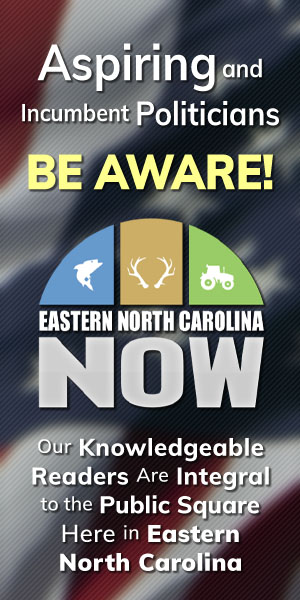The Human Touch Revealing All that is Real
The Frivolity of Free Community College (And What We Can Do Instead)
Publisher's note: The John William Pope Center for Education Policy provides a treasure trove of information suggesting the better path forward in regards to North Carolina's number one issue - public education. Public education, at all levels, requires a significant amount of funding from our state government, and all one hundred North Carolina counties, so it is essential that leaders effecting education policy get it right, and know that concerned entities, like the John William Pope Center, will be minding their progress to do so. We welcome the John William Pope Center for Education Policy to our growing readership, and expect our readers to learn all they can to do their part in this wise endeavor to better educate our People.
The author of this post is Stephanie Keaveney.
The idea of free community college has become a topic of national debate in recent years, highlighted by Tennessee's and Oregon's enactment of statewide plans, and President Obama's advocacy for a nationwide program.
North Carolina Attorney General Roy Cooper, who last week won the Democratic nomination for governor, has laid out a lofty education plan that includes tuition-free community college for North Carolina students. How to pay for this plan and its overall structure remains uncertain, but the flaws of similar plans-and more innovative ideas to improve access and outcomes for North Carolina's community college students-are worth discussion.
In May of 2014 Tennessee became the first state to offer a free community college program, the Tennessee Promise. Under its guidelines, students who immediately enter community college after high school graduation may receive a last-dollar scholarship, which means the state pays tuition and fees not covered by federal- or state-funded grants. Students must maintain a 2.0 GPA and complete eight hours of community service each semester while they receive the scholarship.
In July of 2015 Oregon became the second state to offer free community college with the Oregon Promise. Similar to the Tennessee's program, Oregon students must apply within six months of high school graduation and apply for other federal and state financial aid. But under Oregon's plan, students who qualify for the program receive a minimum of $1,000 in aid, even if their cost of attendance is completely covered by federal and state aid.
One problem with both these programs is that the last-dollar approach disproportionately benefits wealthier students who are already likely to enroll and succeed in college. This is because wealthier students often do not qualify for the maximum Pell Grant award, and the state programs fill the gaps at higher dollar amounts than they do with lower-income students with higher aid amounts. However, a first-dollar program would have negative consequences for state budgets because altering the cost-of-attendance-another mechanism used to determine federal Pell Grant award amounts-would lower each student's ability to receive the maximum amount, meaning state funds would need to cover more of every eligible student's tuition.
Furthermore, according to the American Association of Community Colleges, 25 percent of community colleges operate in states where most students can already attend for free or nearly free due to the availability of federal, state, and institution aid. In North Carolina the average cost of tuition at a community college in 2014 was $3,313, while the average amount of grant aid received was $4,592. Additionally, 65 percent of community college students in North Carolina received at least some form of grant aid.
Perhaps the most concerning aspect of free community college is that completion rates at community colleges are already dismal. The guarantee of free tuition is unlikely to improve them. Nationwide, only 20 percent of first-time, degree-seeking students who enroll in community college ever earn a degree. The removal of all personal financial risk from attempting college does not incentivize students to complete their degrees. So far no program has proposed a safeguard against this issue.
Finally, these programs only benefit students who enroll immediately after high school, despite the fact that 53 percent of community college students are over the age of 21.
If the goal of free community college is to improve access-especially for low-income students-there are more effective methods that have a broader scope. North Carolina legislators should consider options such as the expansion of scheduling flexibility and online courses; development of competency-based education programs; awarding credit for prior learning; and increasing financial literacy among potential students.
A large number of community college students have obligations such as work or family that affect their ability to succeed in traditional class structures. In response to this, community colleges should expand non-traditional class structures that include online, hybrid, accelerated, and weekend class options. These alternatives allow students to find a more equitable work-life balance, increasing the likelihood that they will continue to graduation.
Online learning, specifically, can be vital to a student's success. A national study of community colleges found that students who take online classes are 25 percent more likely to not only complete their degree, but to do it in less time than students who only attend traditional classes.
Additionally, research from the Community College Research Center indicates that students unable to register for necessary classes are significantly more likely to drop out and not return in the future. By using alternative class structures, colleges are able to offer more sections of classes than is possible with traditional weekday class structures, meaning that students are more likely to fulfill their program requirements on time and complete their program.
Competency-based programs (CBPs) are an emerging form of higher education that have met with great success at community colleges across the United States. Rather than students earning credits based on hours spent in classrooms, CBPs incorporate credits for demonstrated competency in certain skills.
Austin Community College of Texas was one of the first colleges to adopt a CBP. The college worked with local industry leaders to identify key competencies within their field, and designed curricula that would allow students to develop and demonstrate those skills.
CBPs are an accelerated and flexible path to a community college degree, which specifically benefit nontraditional students who may have previous experience but have not earned formal credit. Additionally, these programs attempt to address a growing concern among business leaders that students are not learning applicable skills in the traditional brick-and-mortar classroom.
Like competency-based programs, credit for prior learning (CPL) programs specifically target non-traditional students who return to school from the military, the workforce, or other non-academic learning experiences. The American Council on Education's College Credit Recommendation (CREDIT) Service is a nationwide program that "connects workplace learning with colleges and universities by helping adults gain access to academic credit for formal courses and examinations taken outside the traditional classroom." Currently only 22 of North Carolina's 58 community colleges utilize the CREDIT program, despite 2,000 colleges nation-wide that accept CPL.
A study from the Council for Adult and Experiential Learning found that, of the institutions examined, six percent of students without CPL earned an Associate's degree, while 13 percent students with CPL earned an Associate's degree. Additionally, of the students who did earn degrees, those with CPL were more likely to finish their requirements in less time than those without. These results were consistent regardless of age, GPA, race, or financial aid status.
Perhaps the single largest factor for increasing college access to low-income students is increased financial literacy. Nationwide, 20 percent of student eligible for grant-based aid never apply. The most commonly cited reasons include students who think the process is too difficult, or a misunderstanding of the difference between grant-based aid and student loans.
An analysis by the Education Trust found that students from low-income school districts are less likely to complete the federal Free Application for Federal Student Aid (FAFSA) than students at wealthier school districts in the same state. However, the report also highlighted the fact that the gap is comparatively small for students in North Carolina. This is most likely due to a coordinated effort between the College Foundation of North Carolina, the North Carolina Association of Student Financial Aid Administrators, and the State Employees' Credit Union that provides free help to students and parents in completing the FAFSA process.
Policy makers nationwide are likely to continue parading support for tuition-free community college plans. However, the alternatives discussed above would not only offer a better pathway to promote access and success for the most vulnerable students; they have an added benefit of a significantly lower cost to taxpayers.
Go Back
The author of this post is Stephanie Keaveney.
The idea of free community college has become a topic of national debate in recent years, highlighted by Tennessee's and Oregon's enactment of statewide plans, and President Obama's advocacy for a nationwide program.
North Carolina Attorney General Roy Cooper, who last week won the Democratic nomination for governor, has laid out a lofty education plan that includes tuition-free community college for North Carolina students. How to pay for this plan and its overall structure remains uncertain, but the flaws of similar plans-and more innovative ideas to improve access and outcomes for North Carolina's community college students-are worth discussion.
In May of 2014 Tennessee became the first state to offer a free community college program, the Tennessee Promise. Under its guidelines, students who immediately enter community college after high school graduation may receive a last-dollar scholarship, which means the state pays tuition and fees not covered by federal- or state-funded grants. Students must maintain a 2.0 GPA and complete eight hours of community service each semester while they receive the scholarship.
In July of 2015 Oregon became the second state to offer free community college with the Oregon Promise. Similar to the Tennessee's program, Oregon students must apply within six months of high school graduation and apply for other federal and state financial aid. But under Oregon's plan, students who qualify for the program receive a minimum of $1,000 in aid, even if their cost of attendance is completely covered by federal and state aid.
One problem with both these programs is that the last-dollar approach disproportionately benefits wealthier students who are already likely to enroll and succeed in college. This is because wealthier students often do not qualify for the maximum Pell Grant award, and the state programs fill the gaps at higher dollar amounts than they do with lower-income students with higher aid amounts. However, a first-dollar program would have negative consequences for state budgets because altering the cost-of-attendance-another mechanism used to determine federal Pell Grant award amounts-would lower each student's ability to receive the maximum amount, meaning state funds would need to cover more of every eligible student's tuition.
Furthermore, according to the American Association of Community Colleges, 25 percent of community colleges operate in states where most students can already attend for free or nearly free due to the availability of federal, state, and institution aid. In North Carolina the average cost of tuition at a community college in 2014 was $3,313, while the average amount of grant aid received was $4,592. Additionally, 65 percent of community college students in North Carolina received at least some form of grant aid.
Perhaps the most concerning aspect of free community college is that completion rates at community colleges are already dismal. The guarantee of free tuition is unlikely to improve them. Nationwide, only 20 percent of first-time, degree-seeking students who enroll in community college ever earn a degree. The removal of all personal financial risk from attempting college does not incentivize students to complete their degrees. So far no program has proposed a safeguard against this issue.
Finally, these programs only benefit students who enroll immediately after high school, despite the fact that 53 percent of community college students are over the age of 21.
If the goal of free community college is to improve access-especially for low-income students-there are more effective methods that have a broader scope. North Carolina legislators should consider options such as the expansion of scheduling flexibility and online courses; development of competency-based education programs; awarding credit for prior learning; and increasing financial literacy among potential students.
Scheduling Flexibility and Online Learning
A large number of community college students have obligations such as work or family that affect their ability to succeed in traditional class structures. In response to this, community colleges should expand non-traditional class structures that include online, hybrid, accelerated, and weekend class options. These alternatives allow students to find a more equitable work-life balance, increasing the likelihood that they will continue to graduation.
Online learning, specifically, can be vital to a student's success. A national study of community colleges found that students who take online classes are 25 percent more likely to not only complete their degree, but to do it in less time than students who only attend traditional classes.
Additionally, research from the Community College Research Center indicates that students unable to register for necessary classes are significantly more likely to drop out and not return in the future. By using alternative class structures, colleges are able to offer more sections of classes than is possible with traditional weekday class structures, meaning that students are more likely to fulfill their program requirements on time and complete their program.
Competency-Based Programs
Competency-based programs (CBPs) are an emerging form of higher education that have met with great success at community colleges across the United States. Rather than students earning credits based on hours spent in classrooms, CBPs incorporate credits for demonstrated competency in certain skills.
Austin Community College of Texas was one of the first colleges to adopt a CBP. The college worked with local industry leaders to identify key competencies within their field, and designed curricula that would allow students to develop and demonstrate those skills.
CBPs are an accelerated and flexible path to a community college degree, which specifically benefit nontraditional students who may have previous experience but have not earned formal credit. Additionally, these programs attempt to address a growing concern among business leaders that students are not learning applicable skills in the traditional brick-and-mortar classroom.
Credit for Prior Learning
Like competency-based programs, credit for prior learning (CPL) programs specifically target non-traditional students who return to school from the military, the workforce, or other non-academic learning experiences. The American Council on Education's College Credit Recommendation (CREDIT) Service is a nationwide program that "connects workplace learning with colleges and universities by helping adults gain access to academic credit for formal courses and examinations taken outside the traditional classroom." Currently only 22 of North Carolina's 58 community colleges utilize the CREDIT program, despite 2,000 colleges nation-wide that accept CPL.
A study from the Council for Adult and Experiential Learning found that, of the institutions examined, six percent of students without CPL earned an Associate's degree, while 13 percent students with CPL earned an Associate's degree. Additionally, of the students who did earn degrees, those with CPL were more likely to finish their requirements in less time than those without. These results were consistent regardless of age, GPA, race, or financial aid status.
Financial Literacy
Perhaps the single largest factor for increasing college access to low-income students is increased financial literacy. Nationwide, 20 percent of student eligible for grant-based aid never apply. The most commonly cited reasons include students who think the process is too difficult, or a misunderstanding of the difference between grant-based aid and student loans.
An analysis by the Education Trust found that students from low-income school districts are less likely to complete the federal Free Application for Federal Student Aid (FAFSA) than students at wealthier school districts in the same state. However, the report also highlighted the fact that the gap is comparatively small for students in North Carolina. This is most likely due to a coordinated effort between the College Foundation of North Carolina, the North Carolina Association of Student Financial Aid Administrators, and the State Employees' Credit Union that provides free help to students and parents in completing the FAFSA process.
Policy makers nationwide are likely to continue parading support for tuition-free community college plans. However, the alternatives discussed above would not only offer a better pathway to promote access and success for the most vulnerable students; they have an added benefit of a significantly lower cost to taxpayers.
| Clean Power Plan Regulations Called Costly, Ineffective | John William Pope Center Guest Editorial, Editorials, Op-Ed & Politics | Charleston Tour Guides Challenge Licensing Law |





















